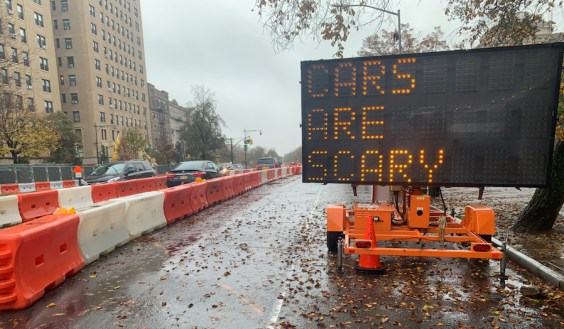There's a proposal on the table in Boulder, Colorado, to preserve 25 acres in the heart of the city for agricultural purposes in perpetuity.
The problem, says Zane Selvans at Flat Iron Bike, is that from a sustainability perspective there are better uses for such a big parcel of urban land. Selvans says the proposal -- on a property known as Long’s Garden in North Boulder -- is at odds with the city's goal to become more walkable and livable for people.
The proposal is problematic on a number of levels, he says:
The opportunity cost of acquiring the land’s development rights is very high in terms of land outside the city’s growth boundary that could be preserved with the same amount of money. For example, the City purchased a conservation easement on the 243 acre Windhover Ranch in 1993 for $1M, about a fifth the cost of the proposed agricultural easement on Long’s Garden. Two decades of inflation make that equivalent to roughly $1.6M today. The easement on the 25 acre Long’s Garden parcel is proposed to cost $4.7M. This means that per acre preserved, Long’s Garden costs nearly 30 times as much as the Windhover ranch.
Long’s Garden is immediately adjacent to the Broadway high frequency transit corridor. Purchasing an agricultural easement on this property would permanently degrade the value of our investments in transit service along Broadway by unnecessarily reducing the number of households and businesses that the transit corridor can serve. The functionality and economic efficiency of transit depends heavily on land use patterns. We should not needlessly hinder transit’s ability to serve our community, further incentivizing driving as the dominant mode of travel.
Long’s Garden is right in the center of North Boulder. By far the best use of that land, in the context of Boulder’s sustainability, is to ensure that it is eventually made into good city — city that is accessible to people on foot, by bike, and via transit, and that is a joy to inhabit as a human being. Preserving it in perpetuity in an undeveloped state only serves to unnecessarily separate destinations in one of the most centrally located portions of the city. Good cities — cities that embrace their urban state and form themselves around human beings rather than automobiles — are the most powerful platform on which to build a sustainable civilization. They give their citizens access to economic, social and recreational opportunities by virtue of proximity. This allows people to conveniently access their community by traveling short distances slowly, which is a fundamentally lower energy proposition than attempting to go long distances quickly.
Elsewhere on the Network today: Greater City Providence outlines the city's renewed plans for a streetcar. The Fast Lane explains that demand for federal TIGER grants remains strong, about twenty times stronger, in fact, than available funding. And the Architect's Newspaper reports that, for the first time in 16 years, Cincinnati's Roebling Bridge over the Ohio River is open to cyclists and pedestrians.






